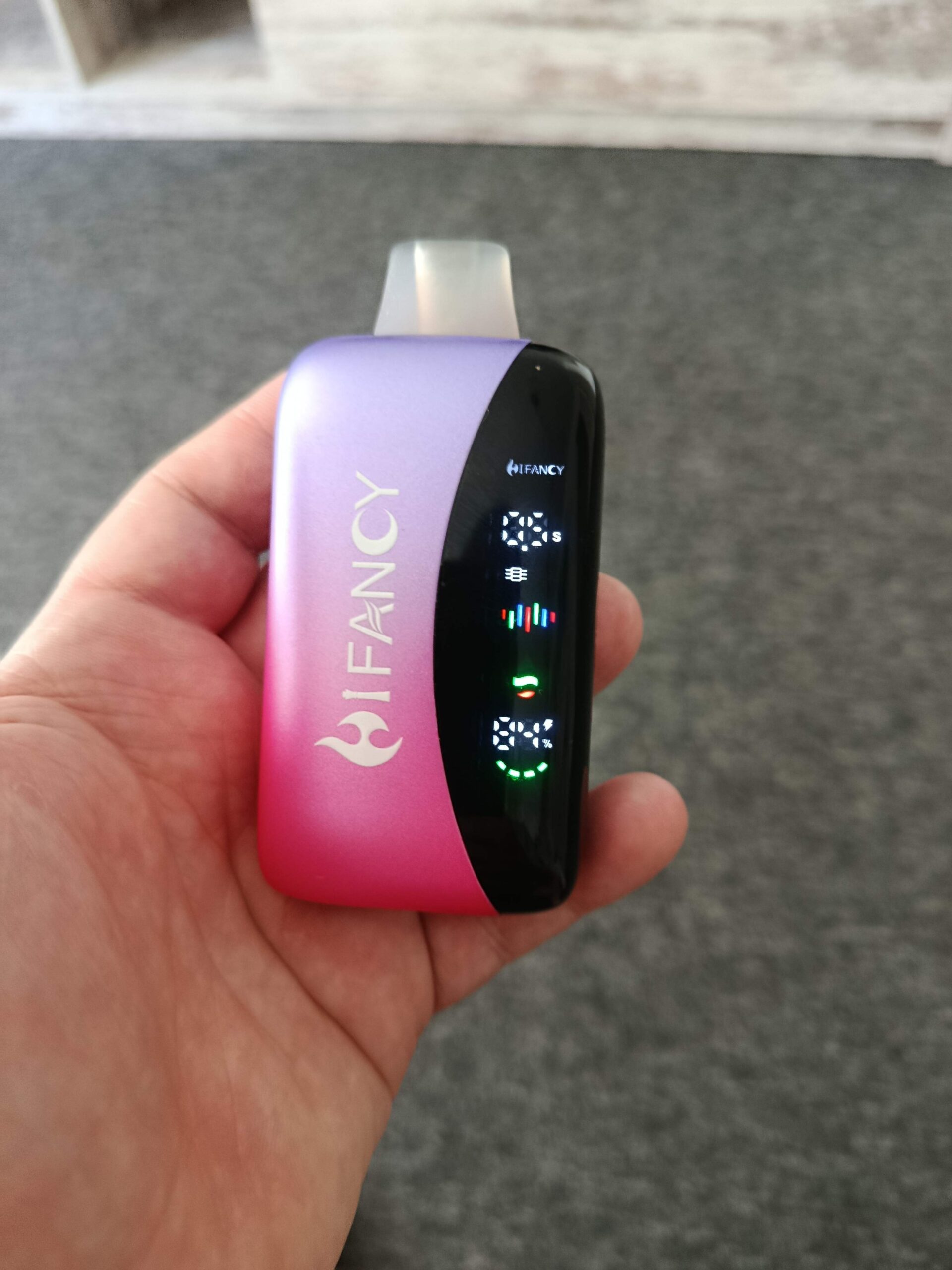El grado de irritación de los cigarrillos electrónicos en las vías respiratorias
The Intensity of Respiratory Irritation Caused by E-Cigarettes: Unveiling the Science Behind Acute and Chronic Effects
E-cigarettes, often marketed as a “safer alternative” to traditional tobacco, have sparked intense debate regarding their impact on respiratory health. While they eliminate combustion-related toxins like tar, emerging research reveals that e-cigarette aerosols contain a cocktail of chemicals that trigger acute inflammation, impair lung function, and increase the risk of chronic respiratory diseases.
Immediate Respiratory Reactions: From Bronchoconstriction to Inflammation
Short-Term Bronchial Constriction and Airway Hyperresponsiveness
Within minutes of inhaling e-cigarette vapor, users experience measurable bronchoconstriction—a narrowing of the airways that reduces airflow. A 2022 study published in Archives of Toxicology found that mice exposed to e-cigarette aerosol for 10 weeks exhibited a 15% reduction in forced expiratory volume (FEV1), a key indicator of lung function. Human trials corroborate these findings: participants who vaped for just 5 minutes showed a 12% decline in peak expiratory flow (PEF), accompanied by wheezing and chest tightness. This rapid airway narrowing is attributed to nicotine-induced sympathetic nervous system activation, which releases acetylcholine and constricts smooth muscle in the bronchi.
Inflammatory Cytokine Surge and Mucosal Damage
E-cigarette aerosols contain propylene glycol (PG) and vegetable glycerin (VG), which break down into formaldehyde and acrolein when heated. These aldehydes, along with flavoring chemicals like diacetyl and benzaldehyde, trigger a cascade of inflammatory responses. A 2023 analysis of induced sputum from e-cigarette users revealed a 10-fold increase in interleukin-6 (IL-6) and a 5-fold rise in tumor necrosis factor-alpha (TNF-α) compared to non-smokers. These cytokines disrupt the epithelial barrier, allowing pathogens and particulates to penetrate deeper into the lungs. Simultaneously, nicotine suppresses mucociliary clearance—the respiratory system’s natural defense mechanism—by paralyzing cilia and reducing mucus production, increasing susceptibility to infections.
Acute Respiratory Symptoms in Young Users
Adolescents and young adults are particularly vulnerable to e-cigarette-induced respiratory irritation. A 2023 longitudinal study tracking 2,000 participants aged 14–22 found that those who vaped within the past 30 days had an 81% higher risk of wheezing and a 78% increased likelihood of shortness of breath compared to non-users. Even after adjusting for asthma history, the association persisted, indicating that e-cigarettes independently harm respiratory health. Symptoms often manifest as persistent coughing, throat irritation, and a sensation of “heavy breathing,” particularly after physical exertion.
Long-Term Respiratory Risks: From Chronic Inflammation to Irreversible Damage
Chronic Obstructive Pulmonary Disease (COPD) and Emphysema
While e-cigarettes lack the tar found in traditional cigarettes, their aerosols contain ultrafine particles (<100 nm) that penetrate alveoli, the tiny air sacs where gas exchange occurs. A 2025 meta-analysis of 12 cohort studies linked long-term e-cigarette use to a 30% higher risk of COPD, with risk doubling among dual users (those who vape and smoke). Animal models show that chronic exposure to e-cigarette vapor accelerates alveolar destruction, mimicking emphysema pathology. This is partly due to upregulated matrix metalloproteinase-9 (MMP-9), an enzyme that degrades collagen and elastin in lung tissue, reducing lung elasticity and impairing oxygen uptake.
Asthma Exacerbation and Reduced Control
E-cigarette use worsens asthma symptoms and reduces treatment efficacy. A 2024 Korean study of 1,200 adolescents with asthma found that vapers required 40% more rescue inhaler doses and had twice as many emergency room visits for asthma attacks compared to non-vaping peers. The mechanism involves nicotine-induced bronchial hyperresponsiveness, which amplifies airway constriction in response to triggers like allergens or cold air. Additionally, flavoring chemicals like cinnamaldehyde and menthol inhibit pulmonary surfactant function, destabilizing alveoli and increasing the risk of atelectasis (lung collapse).
E-Cigarette or Vaping Product Use-Associated Lung Injury (EVALI)
The 2019 EVALI outbreak in the U.S. underscored the acute lethality of e-cigarettes. Over 2,800 cases were linked to vitamin E acetate (VEA), a thickening agent used in illicit THC cartridges. However, even VEA-free products can cause lung injury. Autopsies of EVALI patients revealed diffuse alveolar damage (DAD), characterized by fluid accumulation in alveoli, hyaline membrane formation, and neutrophil infiltration—patterns identical to acute respiratory distress syndrome (ARDS). Survivors often face long-term sequelae, including reduced diffusion capacity (DLCO) and fibrotic scarring, which permanently impair lung function.
Riesgos comparativos: Cigarrillos electrónicos frente a cigarrillos tradicionales
Reduced Harm in Some Domains, Not All
Proponents argue that e-cigarettes are less harmful than traditional cigarettes because they lack combustion byproducts like polycyclic aromatic hydrocarbons (PAHs). A 2022中山大学 study comparing mice exposed to e-cigarette aerosol versus cigarette smoke found that while both groups developed airway inflammation, cigarette smoke caused more severe alveolar damage and protein changes in inflammation-related pathways. However, this “reduced harm” narrative is nuanced. At double the nicotine dose, e-cigarettes still caused less tracheal pathology than cigarettes, but their aerosols contained 60% more formaldehyde and 300% more acrolein than cigarette smoke—compounds linked to nasopharyngeal cancer and COPD, respectively.
Dual Use: The Most Dangerous Scenario
Many smokers use e-cigarettes as a bridge to quitting, but dual users face compounded risks. A 2025 analysis of 45,000 adults revealed that dual users had a 65% higher prevalence of chronic bronchitis and a 40% increased risk of lung cancer compared to exclusive smokers. This synergy arises because e-cigarettes deliver nicotine more efficiently than cigarettes, deepening addiction and prolonging exposure to harmful chemicals. Moreover, dual users often underestimate their risk, skipping lung cancer screenings and delaying medical care for respiratory symptoms.
Lagunas normativas e implicaciones para la salud pública
Unlike pharmaceutical nicotine replacement therapies, e-cigarettes face minimal oversight. A 2025 audit of 544 e-liquid samples found that 22% exceeded stated nicotine concentrations by over 100%, while 16% contained no detectable nicotine despite labeling claims. Such inconsistencies undermine harm reduction efforts and expose users to unanticipated risks. Additionally, flavorings like diacetyl—banned in food due to its link to “popcorn lung” (bronchiolitis obliterans)—remain legal in e-cigarettes, perpetuating respiratory harm.
To mitigate risks, policymakers must prioritize:
- Strict Chemical Testing: Mandate third-party verification of e-liquid ingredients and aerosol emissions.
- Restricciones de sabor: Ban chemicals known to cause respiratory disease, such as diacetyl and cinnamaldehyde.
- Public Awareness Campaigns: Counter misinformation by highlighting that “reduced harm” ≠ “harmless.”
Conclusión
E-cigarettes are not a benign alternative to smoking. Their aerosols trigger acute bronchoconstriction, chronically inflame airways, and increase the risk of COPD, asthma exacerbations, and EVALI. While they may pose fewer risks than traditional cigarettes in some domains, dual use and regulatory gaps amplify their dangers. Until long-term safety data is available, the precautionary principle should guide public health policy: e-cigarettes are a respiratory health hazard, particularly for youth and vulnerable populations.









